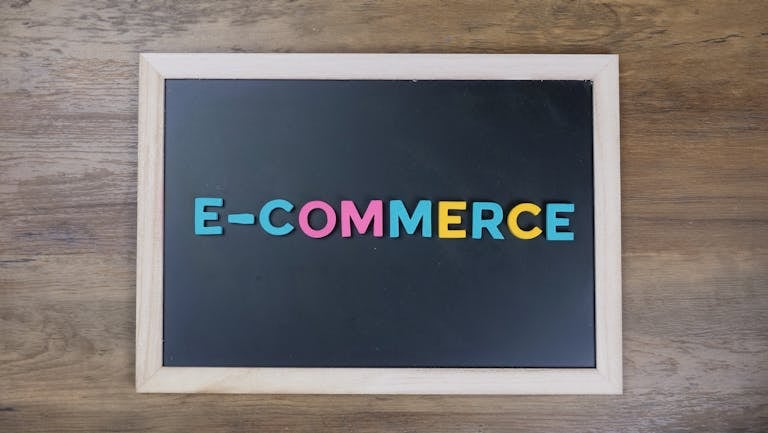Boost Website Traffic with These Proven Strategies
Search Engine Optimization (SEO) is a multifaceted digital marketing strategy designed to increase website traffic and improve visibility on search engines, including Google, Bing, and Yahoo. The primary goal of SEO is to attract organic traffic by improving the site’s ranking for relevant keywords by combining on-page and off-page techniques.
On-page SEO optimizes individual web pages to rank higher and earn more relevant traffic. Optimize title tags, meta descriptions, header tags, and ensure that the content is rich in keywords while still being valuable to the reader. For instance, a blog post about “best practices for SEO” should naturally incorporate keywords like “SEO strategies,” “keyword research,” and “link building” without compromising the quality of the content.
On the other hand, off-page SEO refers to actions taken outside of your website to impact your rankings within search engine results pages (SERPs). Use link building, which is acquiring hyperlinks from other websites to your own. High-quality backlinks from reputable sites signal that your content is credible and valuable to search engines.
For example, if a well-known digital marketing blog links to your article on SEO techniques, it drives traffic and enhances your site’s authority in search engines. Additionally, local SEO has gained prominence as businesses strive to attract customers in their geographical area. This involves optimizing for local search terms and ensuring that business listings are accurate across various platforms and directories.
Key Takeaways
- SEO is crucial for improving website traffic and driving organic traffic.
- Content marketing is about creating valuable and relevant content to attract and engage a target audience.
- Social media marketing involves using social platforms to connect with the audience and build brand awareness.
- Email marketing is an effective way to nurture leads and drive conversions through targeted email campaigns.
- Influencer partnerships can help expand reach and credibility by leveraging the influence of key individuals in the industry.
Content Marketing
Content marketing is an essential component of any successful digital marketing strategy. It revolves around creating and distributing valuable, relevant content to attract and engage a clearly defined audience. The ultimate aim is to drive profitable customer action.
Many forms of content marketing include blog posts, videos, infographics, podcasts, and eBooks. For instance, a company that sells or recommends outdoor gear might create blog posts about hiking tips, gear reviews, and trail guides. By providing helpful information, they establish themselves as an authority in the outdoor space and create opportunities for product promotion.
Moreover, content marketing is not just about creating content; it’s about making the right content for the right audience at the right time. Understanding your target audience’s needs and preferences is crucial. Tools like Google Analytics can provide insights into what types of content resonate most with your audience.
For example, if analytics show that video content receives significantly more engagement than written articles, investing more resources into video production may be wise. Additionally, repurposing existing content can maximize its reach; turning a popular blog post into a video or infographic can attract different segments of your audience who prefer varied formats.
Social Media Marketing

Social media marketing leverages platforms like Facebook, Twitter, Instagram, LinkedIn, and TikTok to connect with audiences and promote products or services. The dynamic nature of social media allows brands to engage with their customers in real time, fostering a sense of community and loyalty. Each platform has its unique characteristics and user demographics, necessitating tailored strategies for effective engagement.
For instance, Instagram is highly visual and works well for brands in the fashion or food industries, while LinkedIn is more suited for B2B companies looking to connect with professionals. Engagement on social media goes beyond merely posting content; it involves interacting with followers through comments, messages, and shares. Brands that actively engage with their audience build stronger relationships and foster brand loyalty.
For example, a restaurant that responds promptly to customer inquiries or comments on their Instagram posts demonstrates attentiveness and care for their patrons. Additionally, social media advertising offers targeted options that allow businesses to reach specific demographics based on interests, behaviors, and location. This precision can lead to higher conversion rates compared to traditional advertising methods.
Email Marketing
| Metrics | Value |
|---|---|
| Open Rate | 25% |
| Click-through Rate | 5% |
| Conversion Rate | 2% |
| Bounce Rate | 3% |
Email marketing remains one of the most effective digital marketing channels for nurturing leads and maintaining customer relationships. It allows businesses to communicate directly with their audience through personalized messages tailored to individual preferences and behaviors. A well-crafted email campaign can drive significant traffic to a website and encourage conversions.
For instance, an e-commerce store might send personalized product recommendations based on previous purchases or browsing history, increasing the likelihood of repeat sales. Segmentation is a critical aspect of successful email marketing. By dividing your email list into specific groups based on demographics or behavior, you can send targeted messages that resonate more deeply with each segment.
For example, a fitness brand might segment its list into beginners, advanced athletes, and those interested in nutrition tips. Each group would receive tailored content that speaks directly to their interests and needs. Furthermore, A/B testing different subject lines or email formats can provide insights into what resonates best with your audience, allowing for continuous improvement in your email marketing strategy.
Influencer Partnerships
Influencer partnerships have emerged as a powerful tool in digital marketing strategies. By collaborating with individuals who have established credibility and a loyal following within specific niches, brands can tap into new audiences and enhance their visibility. Influencers can range from celebrities with millions of followers to micro-influencers with smaller but highly engaged audiences.
For example, a skincare brand might partner with a beauty influencer who shares tutorials and reviews on social media platforms like Instagram or YouTube. The effectiveness of influencer marketing lies in its authenticity; consumers are more likely to trust recommendations from individuals they follow than traditional advertisements. A well-executed influencer campaign can lead to increased brand awareness and sales.
However, to maintain credibility, brands must choose influencers whose values align with their own. For instance, if an eco-friendly brand partners with an influencer known for promoting sustainable living, the partnership will resonate more authentically with the target audience.
Guest Blogging

Guest blogging is a strategic approach that involves writing articles for other websites within your industry or niche. This practice not only helps in building backlinks but also positions you as an authority in your field. By contributing valuable content to reputable sites, you can reach new audiences who may not be familiar with your brand.
For example, if you run a digital marketing agency, writing a guest post for a well-known marketing blog can introduce your expertise to a broader audience while driving traffic back to your site. Moreover, guest blogging fosters relationships within your industry. Engaging with other bloggers or website owners can lead to future collaborations or partnerships that benefit both parties.
It’s essential to ensure that the content you provide is high-quality and relevant to the host site’s audience; this enhances your reputation and increases the likelihood of being invited back for future contributions. Guest blogging can also improve your SEO efforts by generating backlinks from authoritative sites, which can positively impact your rankings.
Paid Advertising
Paid advertising encompasses various forms of online advertising where businesses pay to display their ads on platforms such as Google Ads, Facebook Ads, or Instagram Ads. This approach allows brands to reach specific target audiences based on demographics, interests, and online behavior. One of the significant advantages of paid advertising is its ability to generate immediate visibility; unlike organic methods that may take time to yield results, paid ads can drive traffic almost instantly upon launch.
Different types of paid advertising include pay-per-click (PPC), display ads, social media ads, and retargeting campaigns. PPC advertising allows businesses to bid on keywords relevant to their products or services; when users search for those keywords, their ads appear at the top of search results. For instance, an online bookstore might use PPC ads targeting keywords like “buy bestseller online” or “discounted novels.” Display ads involve visual advertisements placed on websites within an ad network; these can be particularly effective for brand awareness campaigns.
Retargeting campaigns serve ads to users who have previously visited a website but did not convert; this strategy keeps the brand top-of-mind and encourages return visits.
Analytics and Optimization
Analytics and optimization are critical components of any digital marketing strategy. They provide insights into performance metrics that inform decision-making processes. Tools like Google Analytics allow marketers to track website traffic, user behavior, conversion rates, and other key performance indicators (KPIs). By analyzing this data, businesses can identify which strategies are working effectively and which areas require improvement.
Optimization involves continually making data-driven adjustments to enhance performance. For example, if analytics reveal that a particular landing page has a high bounce rate but low conversion rates, it may indicate that the page’s content and design need refinement. A/B testing different elements—such as headlines, images, or call-to-action buttons—can help determine what resonates best with visitors.
Additionally, tracking social media engagement metrics can inform content strategies; if specific posts generate higher engagement rates than others, marketers can focus on creating similar content in the future. In conclusion, leveraging analytics not only aids in understanding past performance but also helps forecast future trends and behaviors within target markets. By continuously optimizing campaigns based on real-time data insights, businesses can enhance their overall effectiveness in reaching their marketing goals while maximizing return on investment (ROI).
To increase web traffic for your website, you may want to check out Gazelle Publishing’s tips for boosting online visibility. This article offers valuable insights on attracting more visitors to your site and improving your overall online presence. You can read the full article here. Gazelle Publishing also reviews various digital marketing strategies that can help drive traffic to your website. Contact us for reviews.
FAQs
What is web traffic for a website?
Web traffic refers to the amount of data sent and received by visitors to a website. It measures a website’s power and reach and can be used to analyze the effectiveness of marketing efforts and the site’s overall performance.
How is web traffic measured?
Web traffic is measured using various tools and analytics platforms, such as Google Analytics, which track the number of visitors, page views, and other relevant metrics. These tools provide insights into website visitors’ behavior and help website owners make informed decisions about their online presence.
What are the different sources of web traffic?
Web traffic can come from various sources, including organic search (visitors finding the website through search engines), direct traffic (visitors who type the website’s URwebsite’sy into their browser), referral traffic (visitors who come to the website from another site), and social media traffic (visitors who click on links shared on social media platforms).
Why is web traffic significant for a website?
Web traffic is essential for a website because it indicates the level of interest and engagement from visitors. Higher web traffic can increase brand visibility, attract potential customers, and create higher revenue opportunities. It also provides valuable insights into user behavior and preferences.
How can website owners increase web traffic?
Website owners can increase web traffic through various strategies, such as search engine optimization (SEO) to improve visibility in search results, creating high-quality and engaging content, utilizing social media and email marketing, and investing in online advertising. It’s also important to regularly analyze web traffic data to identify areas for improvement.
Ready to boost your website’s rankings with compelling, SEO-optimized content? Our professionally crafted SEO articles will drive organic traffic and elevate your online presence. Check out our about page to explore affordable, customizable packages that deliver actual results. Your journey to higher search rankings and increased conversions starts here!





